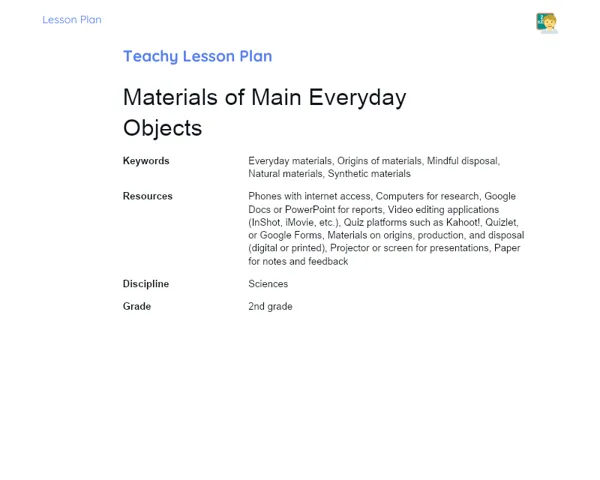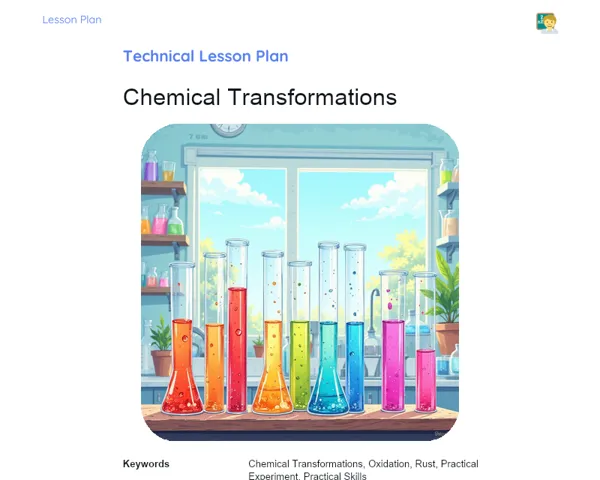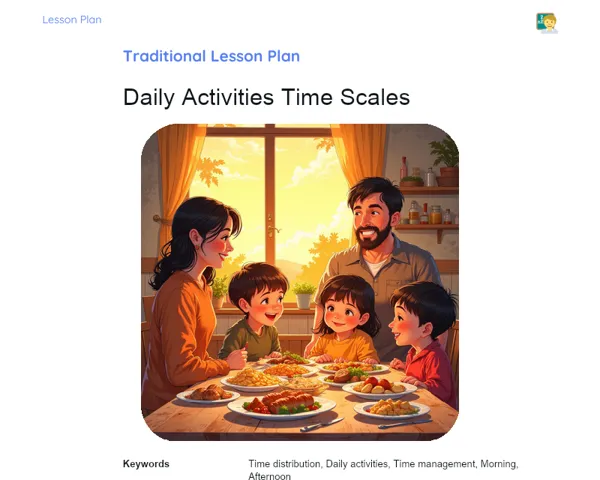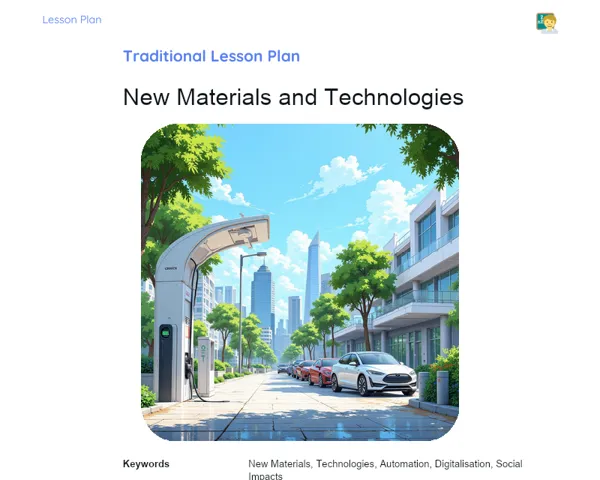Lesson Plan | Lesson Plan Tradisional | Moon
| Keywords | Phases of the Moon, Waxing Moon, Waning Moon, Full Moon, New Moon, Lunar Cycle, Lunation, Lunar Eclipse, Total Lunar Eclipse, Partial Lunar Eclipse, Relative Position, Sun, Earth, Cultural Importance, Scientific Importance |
| Resources | Whiteboard, Markers, Projector or TV, Computer with Internet access, Slide presentation on the phases of the Moon and lunar eclipses, Diagrams of the phases of the Moon, Diagrams of lunar eclipses, Science books on astronomy, Note-taking material (notebooks, pencils, pens) |
Objectives
Duration: (10 - 15 minutes)
The aim of this stage of the lesson plan is to ensure that learners have a clear understanding of the learning objectives related to the Moon. This section sets a strong foundation that will guide the rest of the lesson, helping learners focus on the key points and gain essential knowledge about the phases of the Moon and lunar eclipses.
Objectives Utama:
1. Identify and name the different phases of the Moon: waxing, waning, full, and new.
2. Describe the different types of lunar eclipses and how they happen based on the positions of the Sun, Moon, and Earth.
Introduction
Duration: (10 - 15 minutes)
🎯 Purpose: The aim of this stage of the lesson plan is to ignite learners’ interest and curiosity about the topic. By providing context and sharing interesting facts, the teacher bridges the gap between scientific content and the learners' everyday lives, creating a positive environment for learning. This initial engagement helps to capture the learners’ attention and prepares them for a deeper comprehension of the Moon's phases and lunar eclipses.
Did you know?
🌕 Curiosity: Did you know that the term 'month' is derived from the lunar cycle? In ancient times, calendars were created based on the Moon’s phases, and a full lunar cycle takes about 29.5 days, which is just about a month. Also, many ancient cultures relied on the Moon to mark time and schedule their activities, like when to plant and harvest.
Contextualization
🌙 Context: Begin the lesson by asking the learners if they’ve ever watched the Moon during the night and what they have noticed about its changing appearance on different nights. Explain that the Moon has various phases, and these changes are a captivating phenomenon that occurs due to the relative positions of the Earth, Moon, and Sun. Make it clear that understanding the Moon's phases and eclipses is not only vital for science but also has practical implications in our lives, like in farming, navigation, and different cultures around the world.
Concepts
Duration: (50 - 60 minutes)
🎯 Purpose: The purpose of this stage is to provide learners with a thorough and structured understanding of the Moon's phases and lunar eclipses. By covering specific topics and addressing questions in class, the teacher facilitates effective absorption of content, solidifying the knowledge gained.
Relevant Topics
1. 🌑 Phases of the Moon: Discuss the four main phases of the Moon: new, waxing, full, and waning. Explain how the Moon's position relative to the Earth and the Sun affects its appearance in the night sky. Use visual aids to demonstrate each phase.
2. 🌕 Lunar Cycle: Outline the complete lunar cycle, which lasts around 29.5 days. Elaborate on how the phases repeat in a cycle known as a lunation.
3. 🌒 Lunar Eclipses: Define what a lunar eclipse is and how it occurs. Describe the two primary types of lunar eclipses: total and partial. Discuss the significance of the positions of the Earth, Moon, and Sun for eclipses to happen.
4. 🌍 Cultural and Scientific Importance: Briefly touch on how various cultures have historically used the Moon to track time and organize activities. Explain how current scientific studies of the Moon enhance our understanding of the solar system.
To Reinforce Learning
1. What are the four main phases of the Moon and how do they differ in appearance?
2. What is a lunar cycle and how long does it last?
3. What constitutes a lunar eclipse and what are its main types?
Feedback
Duration: (20 - 25 minutes)
🎯 Purpose: The aim of this segment of the lesson plan is to ensure that learners have a solid and comprehensive grasp of the material covered. Engaging in discussions and posing reflective questions promotes learning consolidation, clarifies uncertainties, and encourages active participation in the subject.
Diskusi Concepts
1. 📚 Discussion: Gather the learners and revisit the explanations for the questions posed in the Development stage. 2. What are the four main phases of the Moon and how do they differ in appearance? 3. New Moon: At this stage, the Moon is situated between the Earth and the Sun, making its illuminated side invisible from Earth. 4. Waxing Moon: Following the New Moon, a waxing portion of the Moon becomes visible, starting as a thin crescent and growing until half the lunar disc is visible. 5. Full Moon: The Moon is on the opposite side of the Sun, revealing its entire illuminated face to Earth. 6. Waning Moon: After the Full Moon, the visible portion of the Moon decreases, returning through half visibility until it becomes a thin crescent leading back to the New Moon. 7. What is a lunar cycle and how long does it last? 8. The lunar cycle, or lunation, refers to the period it takes for the Moon to pass through all its phases, from New Moon to the next New Moon, lasting approximately 29.5 days. 9. What is a lunar eclipse and what are the main types? 10. A lunar eclipse takes place when the Earth positions itself between the Sun and the Moon, casting its shadow on the Moon. There are two primary forms of lunar eclipses: 11. Total Lunar Eclipse: The entire Moon passes through the Earth's shadow and may appear reddish due to the refraction of sunlight through the Earth’s atmosphere. 12. Partial Lunar Eclipse: Only part of the Moon passes through the Earth's shadow, resulting in a portion of the Moon being obscured.
Engaging Students
1. 🗣️ Student Engagement: After the discussion, pose questions and invite reflections to ensure learners grasp the material. 2. Why does the Moon seem to change its shape throughout the month? 3. How do the positions of the Earth, Moon, and Sun affect the Moon's phases? 4. What are the visual differences between a total and a partial lunar eclipse? 5. How might the phases of the Moon have influenced ancient civilisations? 6. Is there a link between the Moon's phases and ocean tides? Explain. 7. Why do we observe lunar eclipses less frequently than the phases of the Moon?
Conclusion
Duration: (10 - 15 minutes)
The aim of this final segment of the lesson plan is to review and reinforce the knowledge acquired by learners, ensuring they grasp a clear and detailed understanding of the topics covered. By summarizing key points, linking to practical applications, and underlining the relevance of the subject, we help solidify learning and highlight its significance in daily life.
Summary
['The phases of the Moon are: New Moon, Waxing Moon, Full Moon, and Waning Moon.', 'The lunar cycle lasts approximately 29.5 days and is termed a lunation.', 'Lunar eclipses occur when the Earth positions itself between the Sun and the Moon, casting its shadow upon the Moon.', 'There are two primary types of lunar eclipses: total and partial.', 'The Moon holds cultural and scientific significance, historically utilized to keep track of time and organize tasks across various cultures, in addition to aiding in our understanding of the solar system.']
Connection
The lesson linked theory to practice by elucidating how the relative positions of the Earth, Moon, and Sun influence lunar phases and eclipses. Diagrams and examples were used to illustrate these phenomena, helping learners understand how these concepts apply to their own Moon observations.
Theme Relevance
Studying the phases of the Moon and eclipses provides practical and cultural significance. The Moon's phases impact activities such as farming and navigation. While lunar eclipses are less common, they are intriguing astronomical events that ignite curiosity about the sky. Moreover, the Moon is crucial for comprehending natural phenomena, like tides.



